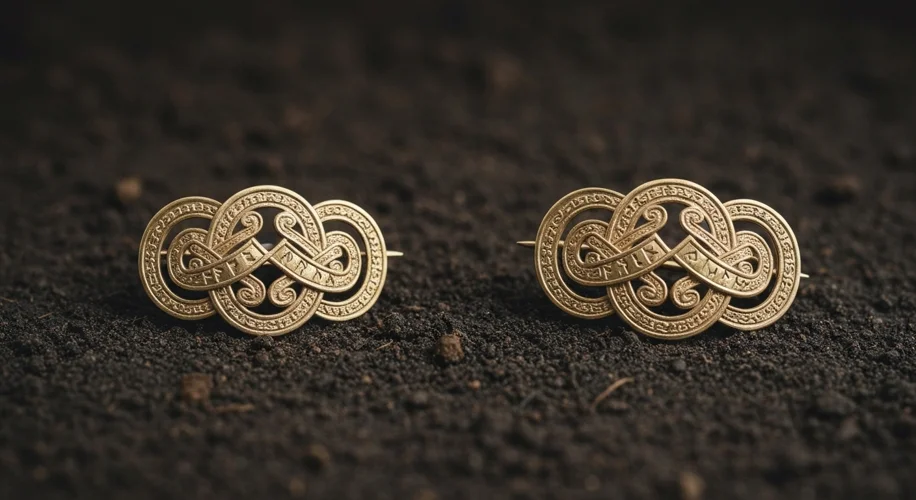The salty air of the Danish coast, around the turn of the first millennium, carried more than just the scent of the sea. It whispered tales of a world in flux, a world where ancient gods were beginning to share the stage with a new, burgeoning faith. It was into this crucible of change that objects of exquisite beauty and profound meaning were laid to rest, destined to remain hidden for nearly a thousand years.
In the rich soil of Hornelund, near Holbæk in Denmark, a remarkable discovery was made, bringing to light the “Hornelund Brooches.” These aren’t just any pieces of jewelry; they are tangible echoes from the Viking Age, specifically from a period of intense cultural transformation. Dating back to approximately the late 10th or early 11th century, these brooches offer a unique window into the hearts and minds of people living through the dawn of Christianity in Scandinavia.

The Viking Age, a period often romanticized with images of fierce warriors and longships, was also a time of sophisticated artistry and complex social structures. The people of this era were not simply raiders; they were also traders, settlers, and artisans, deeply connected to their mythology and ancestral traditions. The discovery of the Hornelund Brooches at this specific time is particularly significant because it coincides with the gradual Christianization of Denmark. This wasn’t a swift or monolithic conversion; it was a slow, often hesitant, integration of new beliefs that interacted with and, at times, transformed existing Norse paganism.
The brooches themselves are masterworks of craftsmanship. Fashioned from gold, their surfaces are adorned with a fascinating blend of artistic styles. One can discern the characteristic knotwork and animal interlace patterns that are hallmarks of Viking art. These designs, deeply rooted in Norse mythology and aesthetic, speak of a continuity with the past. Yet, subtly woven into these familiar patterns are elements that suggest the influence of Christianity. This fusion is where the true magic of the Hornelund Brooches lies. They are not purely pagan nor purely Christian; they are a testament to a society grappling with new ideas while holding onto its heritage.
Scholars examining these pieces have noted the potential for Christian symbolism, perhaps representing the burgeoning faith or its adherents. The very act of burying such valuable items also speaks volumes. Was this a votive offering to the old gods, a hidden treasure meant to be retrieved later, or perhaps a burial with the deceased, intended to accompany them into the afterlife? The context of the find suggests a deliberate act of concealment, perhaps in a time of uncertainty or as a personal act of devotion.
The impact of the Hornelund Brooches extends far beyond their monetary value. They serve as crucial historical artifacts, allowing us to understand the complex cultural syncretism that occurred during the Viking Age. They challenge the simplistic narrative of a sudden abandonment of paganism in favor of Christianity. Instead, they reveal a more nuanced reality where traditions and beliefs often coexisted, blended, and evolved. The presence of these objects tells us that the transition was not just about adopting new gods but also about reinterpreting old ways through a new spiritual lens.
These brooches are silent witnesses to a pivotal moment in Scandinavian history. They are beautiful, enigmatic, and deeply informative, reminding us that even in times of dramatic change, the human capacity for artistry and the enduring power of cultural exchange continue to shape our world. The Hornelund Brooches, unearthed from their millennium-long slumber, continue to tell their story, a story of Vikings standing at the crossroads of worlds, embracing the new while honoring the old.

